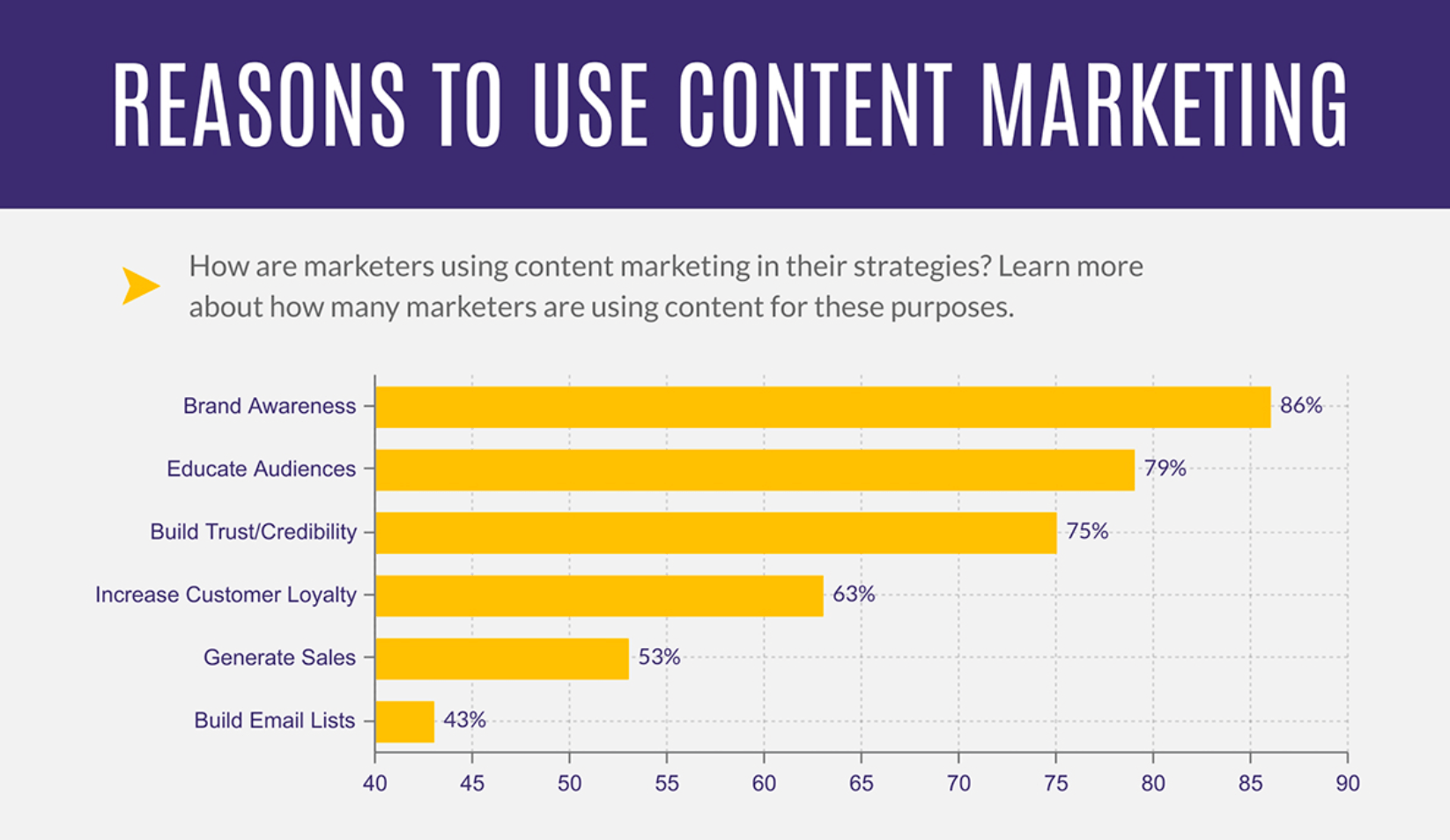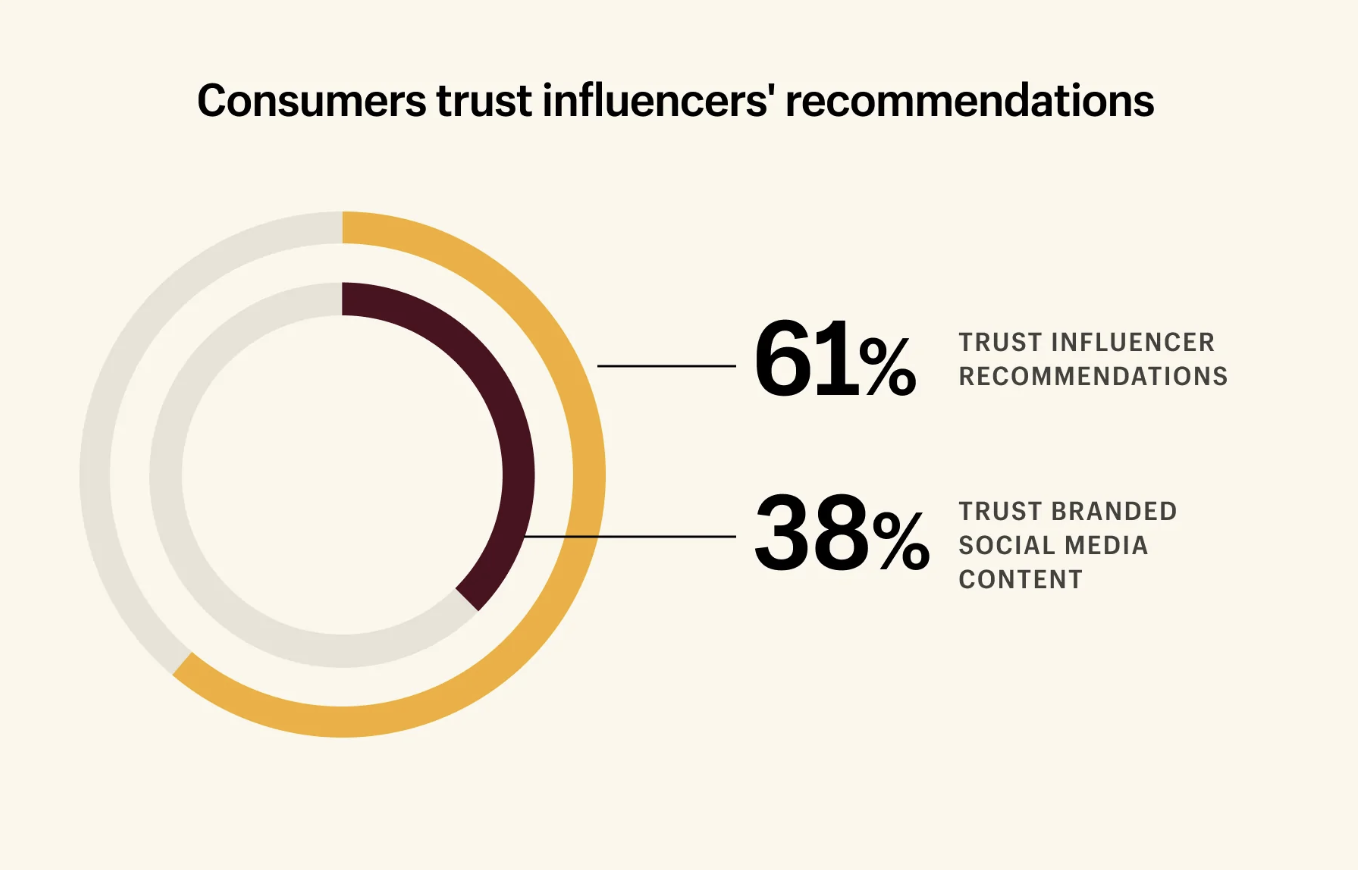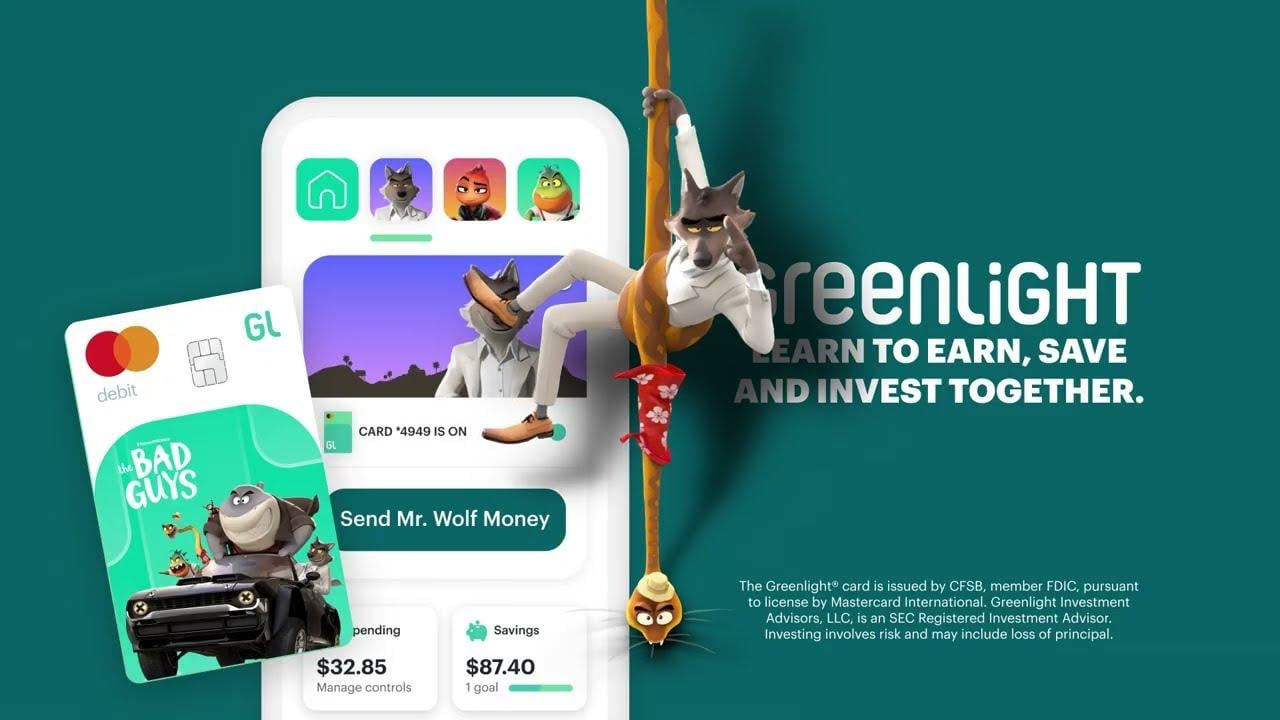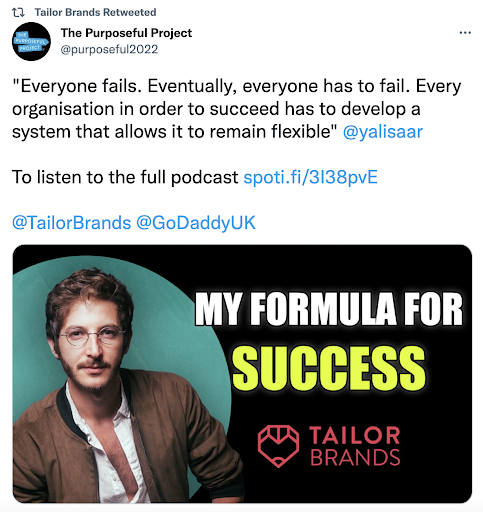Leveraging Content Marketing Collaboration: First-Hand Tips
-
Set clear goals for partnerships
Before entering a collaboration, outline specific objectives you want to achieve, such as increasing brand awareness, driving traffic, or expanding into new markets.
-
Choose content collaboration partners
1. Collaborate with businesses that target a similar audience but don’t directly compete with your brand. This approach allows you to reach new customers without risking market cannibalization. 2. Partner with influencers or platforms that your target audience already trusts and engages with. This can significantly expand your reach and connect you with potential customers more effectively.
-
Know your unique value proposition (UVP)
Clearly define what sets your brand apart and seek partners who appreciate and complement your uniqueness.
-
Maximize content from collaborations
Create a steady stream of high-quality, audience-engaging content from your partnerships. Explore various content types like blog posts, social media, podcasts, and videos to fully leverage the collaboration.
-
Engage your audience
Involve your customers in your content marketing efforts by encouraging them to share reviews, testimonials, or user-generated content. This helps build trust, credibility, and a stronger connection with your audience.
Content is the key to success online, but creating enough of it to rank high on search engines can be a challenge. Why not bring in other content creators to help shoulder the load?
In business, partnerships are often seen as a win-win type of deal where two or more companies come together to achieve the desired result, and build lasting relationships with customers and even other brands. These companies can work together on a simple project like a guest blog or something more involved like co-hosting a seminar.
In this article, we will discuss tips for creating successful partnerships. Each tip is key to boosting your content marketing efforts, so follow each one carefully to see improved results!
What is a content marketing partnership?
A content marketing partnership is when two or more brands team up to create and share content that benefits everyone involved. Instead of competing, these brands work together, usually because they have similar goals or audiences, but they’re not directly competing with each other.
The idea is to combine their strengths and resources to produce content that appeals to both of their audiences, helping to increase reach, engagement, and brand awareness for all the brands involved. This content could be anything from blog posts, videos, and podcasts to social media campaigns or infographics.
Define your content collaboration goals
Before entering into any partnership, know what you hope to achieve. Be specific about your goals. What do you want to get out of this partnership? Get clear on this so you can accurately measure how successful this partnership can be or if it’s even worth pursuing at all.
Here are some goals to aim for in a brand partnership:
- Grow your email list
- Drive more traffic to your website
- Increase brand awareness
- Make more sales
- Move into a new market
- Generate leads
- Launch a new product
There’s no right or wrong answer here. Instead, take the time to think about what you want to achieve and then find a partner whose goals are compatible with yours.

Let’s say you are a small business that sells hand-crafted jewelry. You partner with a local clothing boutique to increase your brand’s awareness and drive traffic to your website.
Your goal is to have the boutique promote your jewelry through their social media channels and have them link to your website from their email newsletter. To achieve this, consider providing them with a discount code to share with their customers.
Brand partnerships also provide you a unique opportunity to explore various cross promotions and upsells that you wouldn’t have access to otherwise. Complementary companies can share data sets and audience research, but even two brands that don’t occupy the same industry space can benefit from collaborating.
How to choose content collaboration partners?
Choosing the right content collaboration partners can make a huge difference in how your content connects with your audience and grows your reach. The right partners bring unique expertise and new perspectives to the table. But how do you find the perfect fit?
In this section, we’ll walk you through two popular methods.
Find a voice your audience already loves
If you want to attract more of your target audience’s attention, find a voice that they already love. This could be an influencer with a large following or a popular blog that covers topics related to your business.
The voice you choose must be relevant to your brand and their values must align with yours.
So let’s say you’re a growing health and wellness brand. You partner up with an online health influencer to create high-quality content to promote your product or service. The project you work on together could be something like posting a video of your workout routine or a guide to healthy recipes. It could be virtually anything as long as it resonates with your audience and the influencer can create it—and create it well.

Find non-compete partners with a similar audience
When you’re looking to start a brand partnership, look for companies that complement your own rather than compete with it.
While it might be tempting to team up with a competitor you have a good relationship with, this could actually do more harm than good. If you’re both targeting the same audience, you could cannibalize your customer base and damage your relationship.
Find non-compete partners with a similar target audience to reach an entirely new group of people within your niche. Not only will you get fresh eyes on your content but you’ll get to build a healthy working relationship with another business.
Customers will also appreciate the convenience of being able to purchase complementary products from a single source.
For example, let’s say you run a small online store that sells eco-friendly home goods. You could partner with a green cleaning company or an organic food delivery service.
Both of these businesses have customers who are interested in living a more sustainable life, so their customers are already more likely to be interested in your content. Plus, you can share the cost of producing high-quality content by partnering with other businesses. This helps stretch your marketing budget even further.
Take your time, do your research, and only partner with businesses with a similar target audience as yours. This is how to reach a whole new group of customers without wasting your time or money on a partnership that won’t benefit either party.
Negotiate a content collaboration: focus on UVP
Finding partners who complement your business is easier when you know what sets you apart from your competition. Brand partnerships need to be mutually beneficial and won’t work otherwise. To successfully pitch a collaboration, be clear on what you’re bringing to the table.
When approaching a company about a partnership, don’t just emphasize your own unique value proposition. Instead, discuss with your partner what their unique value proposition is, too.
You approached them, so be ready to prove your authority in your niche. Showcase any relevant content you’ve already created, marketing channel metrics they might be interested in, and even audience penetration. What new types of customers can you expose them to?
Most importantly, other businesses will want to know the nature of the collaboration agreement. What kind of market can they expect, and what resources will they need to bring to the table? What expertise will you require from them to make this partnership a success? Each company should have a clear mental image of what its unique value proposition is, but it helps to be cognizant of their potential partners’ UVP, too. Sometimes companies aren’t fully aware of what authority they have in certain markets, so it’s your job to show them if you are aware.
Turn one collaboration into endless content
Any business partnership is only as good as the content that comes out of it. If you’re not regularly cranking out high-quality content that appeals to your audience, you’re not making the most out of your partnership.
Figure out what kind of content will resonate the most with your audience, and keep churning out fresh material.
There’s no shortage of audience-engaging content types to choose from. If you’re looking for a deeper dive, consider long-form written content in the form of blog posts. You can either write the post yourself, use a content writing service or establish a guest post exchange with a partner.
Social media is great for offering a more personal touch. Short-form written content like Twitter threads is perfect for quick hits of information.
Podcasts are particularly effective for both creating relationships and a steady stream of content. Not only will you attract a new type of audience (podcast listeners), but you can also use the content as “highlight clips” on other platforms. Share the video of your podcast conversation on your Youtube channel and create still images for your blog articles. Transcribe the podcast episode to churn out additional blog content that can be optimized for SEO.
Best of all, since many podcasts involve a host and a guest, the other person is also incentivized to share your content on their channels to build their own authority. This expands your audience organically and broadens your professional network.
Videos and infographics are excellent visual options, while images can be used to break up longer pieces of text. The only surefire way to determine what type of content will work best for you, however, is to experiment and see what resonates with your audience. Be sure to check out our article on leveraging visual content marketing to attract more website visitors.
Aim for content that gives the audience a glimpse into what your business has to offer. Take this partnership to the next level by using an online course tool and having an influencer be the face of the product. The key is to create valuable and informative content while also promoting your brand.
By sharing content across multiple platforms, you can lengthen the collaboration’s lifespan, providing you with a greater return on investment. If your brand partner sees significant growth in the future, this could spill over into your brand, accelerating your company’s growth, too.
Content collaboration examples
Here, we’ll explore some creative examples of content collaborations—including those that may seem unlikely at first but have proven to be highly successful. Let’s look at how the right collaboration can help you reach new audiences, strengthen your brand’s message, and create engaging content that resonates with different customer segments.
Greenlight kids debit card and The Bad Guys animated movie
Greenlight is a kid’s debit card company that scored a brilliant partnership with the children’s animated movie The Bad Guys. The film’s premise is about two bad guys who need to learn how to be model citizens to avoid going to jail. These supposed villainous characters learn how to be “good guys” by learning new skills or virtues that make them better.
Greenlight’s unique value proposition (UVP) is teaching kids how to be “heroes” by establishing good money habits. They released a bunch of partnership content, including blog posts, Instagram contests, and YouTube videos as a way to synchronize the idea of fiscal stewardship with the movie’s theme of being “good guys.”Since the audiences for both products are the same, Greenlight’s partnership with The Bad Guys is a win for both companies. The movie drives more attention to it by leveraging Greenlight’s consumer base. Greenlight further establishes its UVP by linking good money habits with a definable story.

Vox and Spotify
Vox is an online news website that performs in-depth, explanatory news articles on topics that are hyper-relevant to their audience. Their audience tends to be young, voracious readers with a higher income who are very culturally minded.
Spotify is one of the world’s leading music platforms, hosting every genre of music and audio entertainment in the world.
On the surface, these two brands have little overlap, but they teamed up in 2017 to create content that discussed how Spotify’s “Discover” algorithm matched users with music. Vox readers were fascinated by the in-depth reporting and exposure to music that they may not have thought about beforehand. Spotify devotees in turn learned more about a tool they use every day.
The result was several fantastic content marketing pieces that appealed to both audiences. Both companies grew their reach in different ways.
This type of partnership only works if each brand is clear about what they stand to gain from working together.
Tailor Brands CEO and The Purposeful Project podcast
Tailor Brands CEO Yali Saar collaborated with the podcast The Purposeful Project to create an inspirational piece of content that benefitted both brands.

The Purposeful Project was able to release an engaging piece of content powered by the expertise of a well-known and successful company leader. Tailor Brands increased their exposure and gained positive PR points through the podcast episode. Both companies promoted this collaboration on their respective social media accounts, providing even more content material for their brands.
Everyone wins!
Bonus Tip: Involve your audience in content marketing
Chances are you already have thousands of partners ready to go—your customers. Asking customers for their input is a great way to get them involved in your content marketing efforts. You can ask them to provide reviews or testimonials, share their experience with your product or service, or even create user-generated content. Involving your customers in the process shows that you value their opinions and are interested in hearing what they have to say.
Content from genuine users helps build trust and credibility. User-generated content is often more relatable and down-to-earth than traditional advertising. It also has a tendency to be more personal and engaging, which makes it more likely to be shared.
User-generated content (UGC) is great for establishing a partnership with your customers, but it can also be used in the B2B world to strengthen your professional network. While most business owners are hesitant to write an entire blog post for your site, they’re more likely to contribute a quote or an opinion on a certain subject instead.
“Expert roundups” are either listicles where industry leaders give their thoughts on a topic (such as the future of content marketing), or articles you develop that aggregate various opinions into a singular thought piece. You can link out to each expert, all of whom are inclined to share the content on their pages.
Why? Because it not only strengthens their industry authority, but it also provides them a valuable resource that their audience will want to learn from. If the content is continuously shared, that means more valuable backlinks for them—and you.
Conclusion
These are just a few actionable tips about strategic partnerships you can use to boost your content marketing efforts. By carefully selecting the right partners, you can reach a brand new audience and create valuable content to promote your brand.
By involving your customers in the process, you can build a lasting relationship with them while creating authentic and engaging content.
So what are you waiting for? Start partnering up and watch your content marketing efforts take off!
